This is a drawing of the evolution of the interior of a giant planet.
Click on image for full size
Image from: The New Solar System
How the Interior of Saturn Formed
The drawing shows how the interior of Saturn may have formed. As the planets
drew material from the
solar nebula, bits of heavy, solid material accumulated inside the forming planet, as illustrated in figure A.
Once the planet finished forming, these heavy, solid bits of material fell into the center of the planet, as illustrated in figure B. The heavy elements of the planet made up a much smaller portion of the planet than the gaseous elements. Saturn drew a large amount of gas to itself from the nebula because of where Saturn was in the primordial cloud.
Eventually, the heavy, solid material at the center solidified into a core, as illustrated in figure C.
Leftover heat from this process of Saturn's forming may still influence the motions in Saturn's atmosphere.
You might also be interested in:
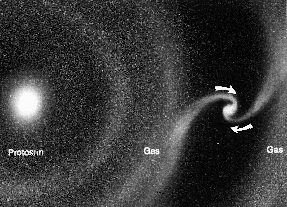
As shown in this picture, while they were forming in the solar nebula, the nucleii of the planets-to-be (called protoplanets) drew material to themselves from the cloud of gas and dust around them. The
...more
An element (also called a "chemical element") is a substance made up entirely of atoms having the same atomic number; that is, all of the atoms have the same number of protons. Hydrogen, helium, oxygen,
...more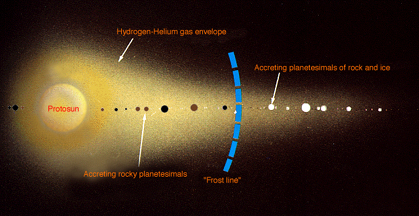
The position of the planets in the solar nebula greatly affected their 1. size and 2. composition. This is because of the effect of how cold it was in the nebula. 1. The nebula was a lot warmer close to
...more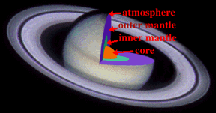
The Giant planets do not have the same layered structure that the terrestrial planets do. Their evolution was quite different than that of the terrestrial planets, and they have less solid material inside.
...more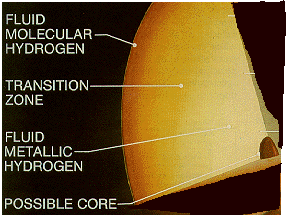
The first liquid layer inside Saturn, immediately under the atmosphere, is the liquid hydrogen layer. The hydrogen atmosphere becomes thicker and thicker, a fog with more and more liquid hydrogen droplets,
...more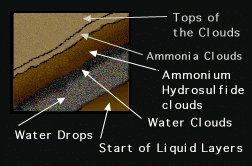
There is no surface to the giant planets, only a gradual transition from the atmosphere, as depicted in this drawing. The hydrogen and helium of which Saturn is mostly composed change to liquid form under
...more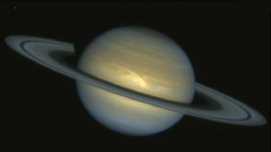
The most important motions in the atmosphere are winds. The major winds in Saturn's atmosphere are the zonal winds which are composed of alternating belts and zones flowing in opposite directions. Belts
...more















